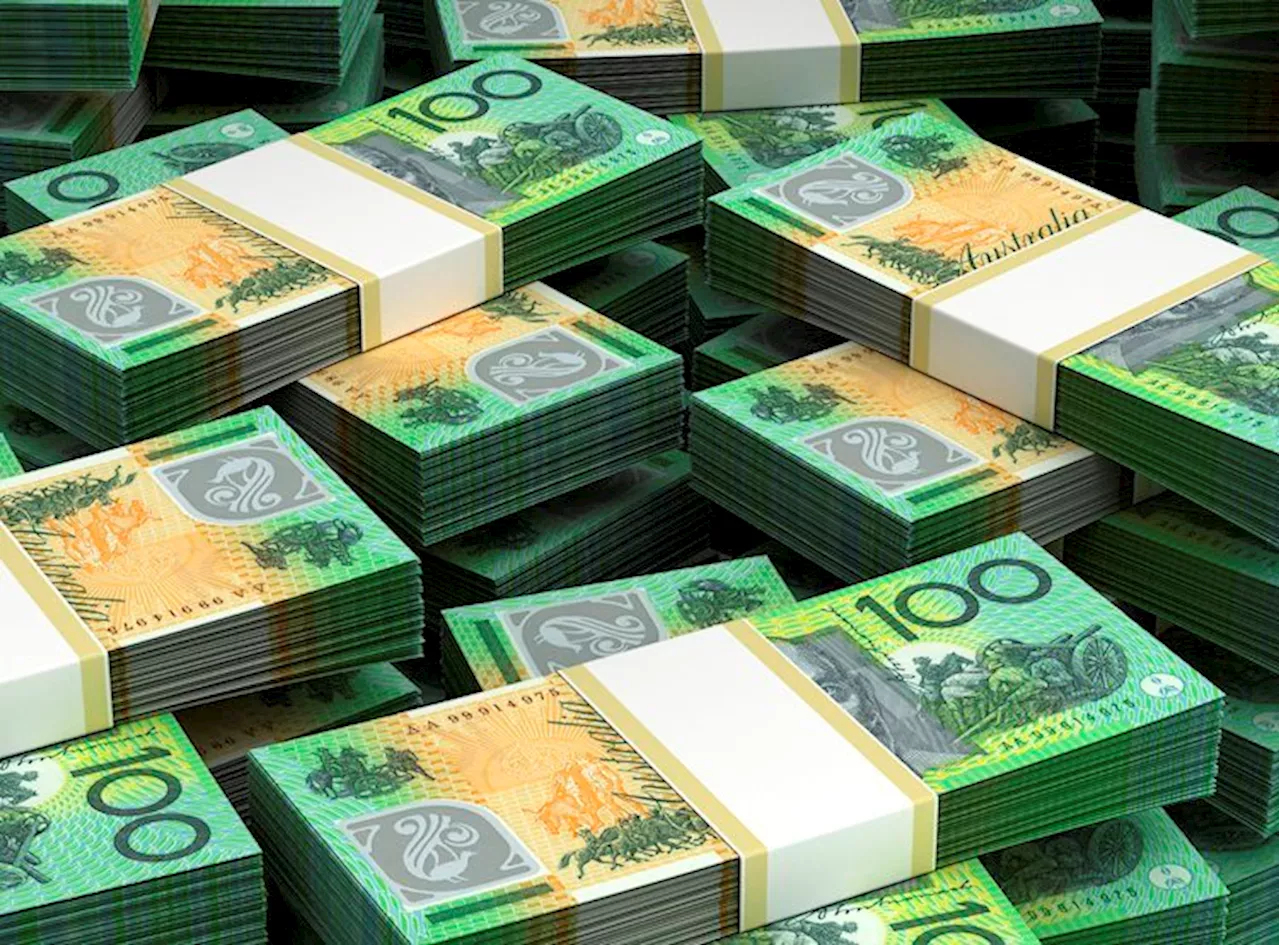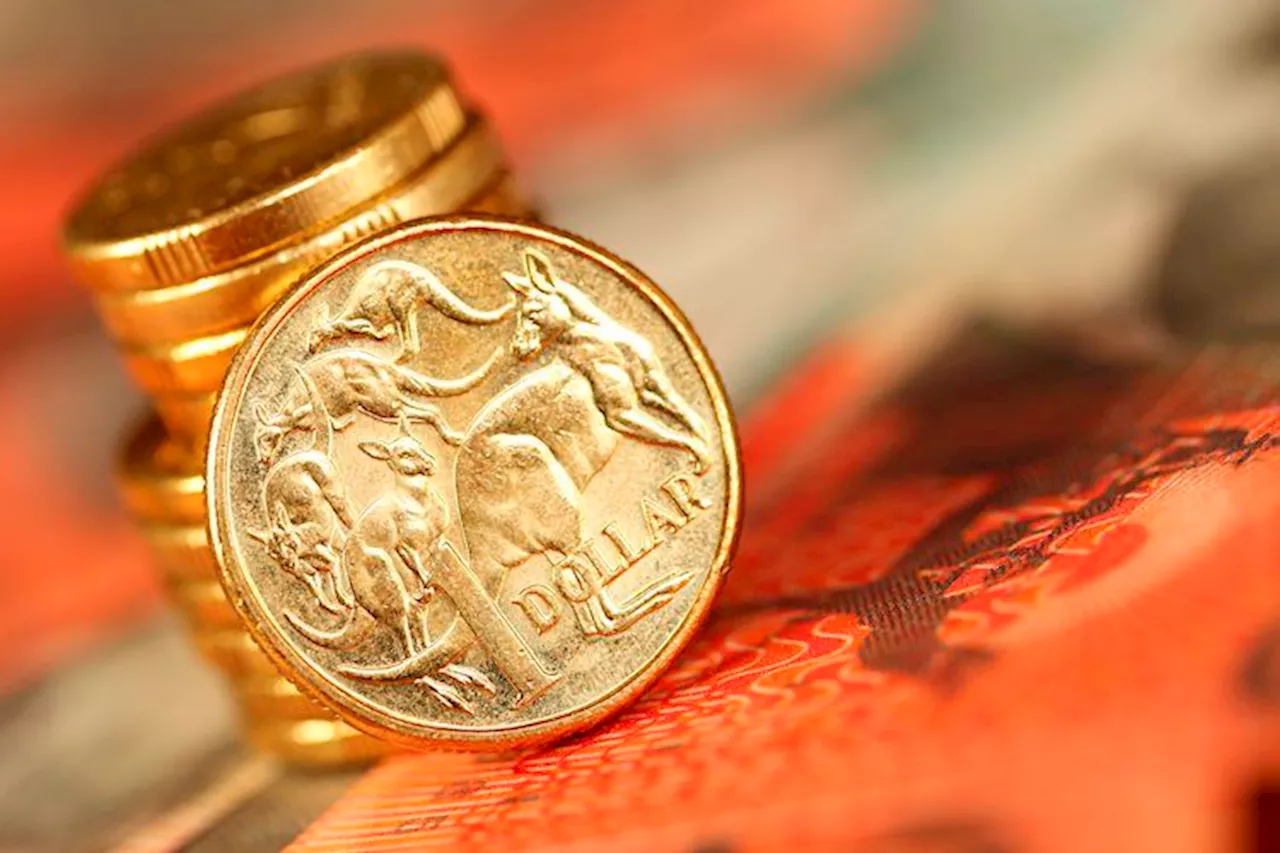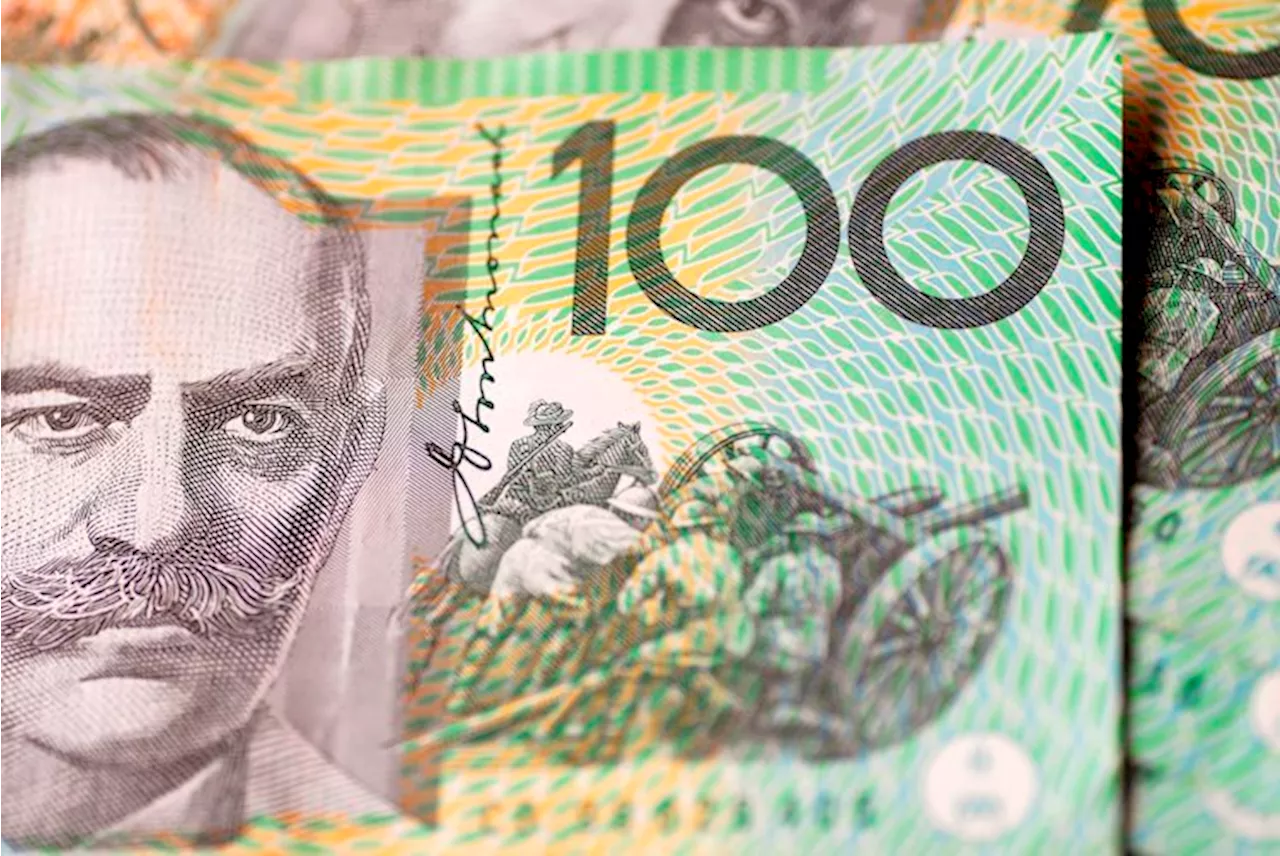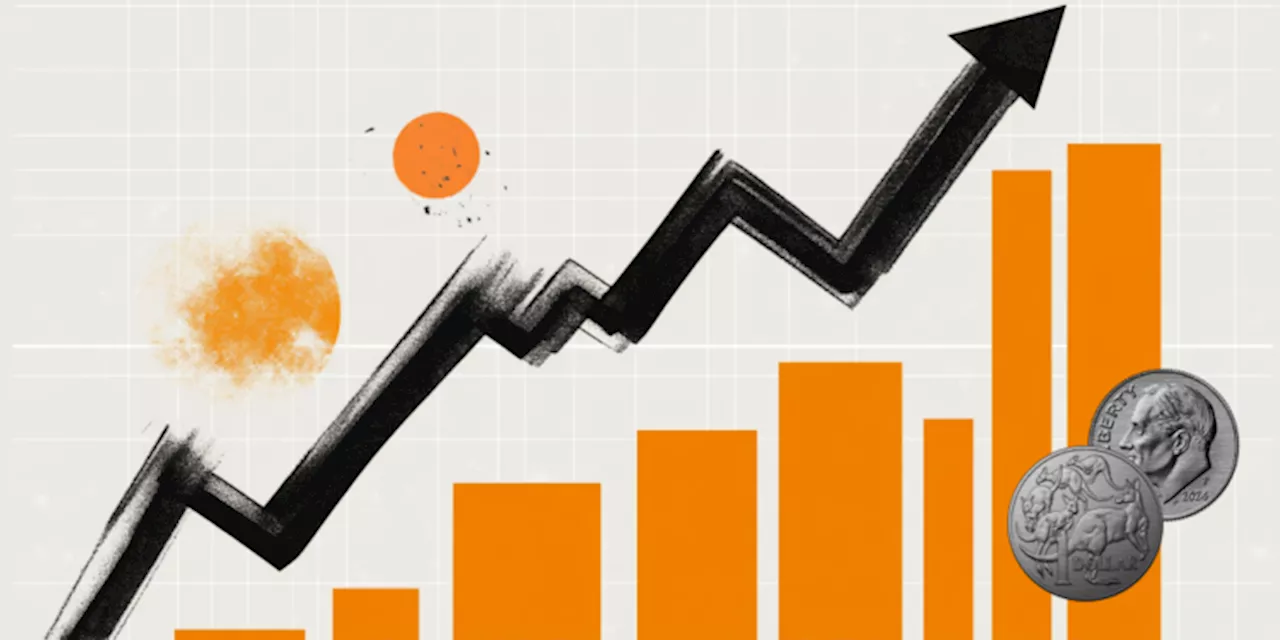The Australian Dollar (AUD) gained for a third consecutive day, surpassing the 0.6200 level against the US Dollar (USD) after the US CPI release failed to surprise markets. The focus now shifts to the upcoming Australian jobs report. Despite facing challenges from a strong US Dollar, slowing domestic fundamentals, and China's economic slowdown, the AUD is showing signs of recovery.
The Australian Dollar (AUD) gained for the third consecutive day, surpassing the 0.6200 level against the US Dollar (USD). This advance comes as the US Dollar experienced weakness following the release of the Consumer Price Index ( CPI ), which failed to deliver any surprises. Market focus is now turning towards the upcoming Australian jobs report.The US Dollar fluctuated between gains and losses on Wednesday, with the US Dollar Index (DXY) dipping below the 109.
00 mark shortly after the CPI announcement. However, it rebounded to the 109.30 region by the end of the trading session. In contrast, the Australian Dollar continued its week-long rally, exceeding 0.6200 and potentially setting the stage for a test of the 0.6300 resistance level in the near future.What is driving the Australian Dollar's recovery? Despite facing pressure from the dominant US Dollar, the Aussie has managed to regain some ground in recent days, fueled by a weakening bias in the Greenback. The surge in the US Dollar around October coincided with the so-called 'Trump trade'. Domestically, the Reserve Bank of Australia (RBA) is considering the possibility of a rate cut in February, citing weak economic momentum and easing inflation concerns. Market expectations for a rate cut currently stand at 62%. Additionally, Australia faces challenges such as lower-than-anticipated Q3 GDP growth (0.3% quarter-on-quarter, 0.8% year-on-year) and declining consumer confidence, which fell to 92.1 in January. Soft commodity prices, coupled with worries about China's economic slowdown – a key driver of Australian exports – have further compounded the pressure. The release of Australia's December labor market report on Thursday could be crucial in determining the RBA's next move in early February.Market signals: RBA keeps everyone guessing At its December meeting, the RBA maintained its interest rates at 4.35% but indicated potential cuts, suggesting that inflation risks are diminishing. RBA Governor Michele Bullock emphasized that future policy decisions will be contingent upon economic data.Challenges and glimmers of hope for AUD/USD The AUD/USD pair faces several obstacles, including persistent US Dollar strength, a slowdown in domestic economic fundamentals, and China's sluggish recovery. However, if the Federal Reserve (Fed) signals a continuation of rate cuts, it could offer some much-needed support to the pair.Technical outlook The AUD/USD remains vulnerable, with critical support at 0.6130. A break below this level could send the pair towards the psychological 0.6000 mark. Resistance lies at 0.6301, with stronger barriers around 0.6401 and 0.6549. Momentum indicators present mixed signals, with the RSI suggesting short-term optimism around 41, but the ADX above 35 confirms a strong bearish trend.AUD/USD daily chart What to watch this week Key Australian data, including labor market figures and inflation expectations, will play a significant role in shaping the outlook. For now, the Australian Dollar remains under considerable pressure despite its three-day rebound. Its recovery is intertwined with both domestic developments and global economic shifts
AUD/USD Australian Dollar US Dollar Forex CPI RBA Interest Rates Australian Jobs Report Economic Outlook
United States Latest News, United States Headlines
Similar News:You can also read news stories similar to this one that we have collected from other news sources.
 AUD/JPY Recovers as Inflation Data Drives Australian Dollar VolatilityAUD/JPY recovered small daily losses, trading around 98.40 during the Asian session on Wednesday. The Australian Dollar (AUD) faced challenges against its peers following the release of monthly inflation data. Australia's trimmed mean inflation fell to 3.2%, nearing the RBA's target band. However, the monthly CPI rose 2.3% YoY, the highest since August. Meanwhile, the Japanese Yen (JPY) strengthened on potential intervention concerns, while uncertainty surrounding the BoJ's next rate hike limited gains. Former BoJ Governor Kuroda forecast further rate hikes in coming years.
AUD/JPY Recovers as Inflation Data Drives Australian Dollar VolatilityAUD/JPY recovered small daily losses, trading around 98.40 during the Asian session on Wednesday. The Australian Dollar (AUD) faced challenges against its peers following the release of monthly inflation data. Australia's trimmed mean inflation fell to 3.2%, nearing the RBA's target band. However, the monthly CPI rose 2.3% YoY, the highest since August. Meanwhile, the Japanese Yen (JPY) strengthened on potential intervention concerns, while uncertainty surrounding the BoJ's next rate hike limited gains. Former BoJ Governor Kuroda forecast further rate hikes in coming years.
Read more »
 Australian Dollar appreciates as US Dollar remains subdued after a softer inflation reportThe Australian Dollar (AUD) steadies following two days of gains on Monday as the US Dollar (USD) remains subdued following the Personal Consumption Expenditures Price Index (PCE) data from the United States (US) released on Friday.
Australian Dollar appreciates as US Dollar remains subdued after a softer inflation reportThe Australian Dollar (AUD) steadies following two days of gains on Monday as the US Dollar (USD) remains subdued following the Personal Consumption Expenditures Price Index (PCE) data from the United States (US) released on Friday.
Read more »
 Australian Dollar Gains on China Manufacturing Data Despite Strong US DollarThe Australian Dollar strengthened against the US Dollar following the release of China's Caixin Manufacturing PMI. While the index unexpectedly fell, it remained in expansionary territory for the 14th consecutive month. This positive signal for the Chinese economy, a key trading partner for Australia, supported the AUD. Meanwhile, the US Dollar Index reached multi-year highs due to the Federal Reserve's hawkish shift in monetary policy.
Australian Dollar Gains on China Manufacturing Data Despite Strong US DollarThe Australian Dollar strengthened against the US Dollar following the release of China's Caixin Manufacturing PMI. While the index unexpectedly fell, it remained in expansionary territory for the 14th consecutive month. This positive signal for the Chinese economy, a key trading partner for Australia, supported the AUD. Meanwhile, the US Dollar Index reached multi-year highs due to the Federal Reserve's hawkish shift in monetary policy.
Read more »
 Australian Dollar Strengthens Despite Weaker Building Permits DataThe Australian Dollar (AUD) continued its upward trend for the fourth consecutive day, gaining against the US Dollar (USD) despite a decline in building permits. The permits for new construction projects in Australia dropped 3.6% in November, falling short of market expectations. The upcoming Australian Monthly Consumer Price Index (CPI) for November will be a key factor influencing the AUD's direction, with a reading below expectations potentially leading to a rate cut by the Reserve Bank of Australia (RBA). Meanwhile, the US Dollar Index (DXY) edged closer to 108.50 after recent losses, as the US ISM Manufacturing PMI improved in December.
Australian Dollar Strengthens Despite Weaker Building Permits DataThe Australian Dollar (AUD) continued its upward trend for the fourth consecutive day, gaining against the US Dollar (USD) despite a decline in building permits. The permits for new construction projects in Australia dropped 3.6% in November, falling short of market expectations. The upcoming Australian Monthly Consumer Price Index (CPI) for November will be a key factor influencing the AUD's direction, with a reading below expectations potentially leading to a rate cut by the Reserve Bank of Australia (RBA). Meanwhile, the US Dollar Index (DXY) edged closer to 108.50 after recent losses, as the US ISM Manufacturing PMI improved in December.
Read more »
 AUD/USD Gains on Weaker Dollar, But Risks LoomThe AUD/USD pair continues its upward trend for the fourth consecutive day, fueled by a slight decline in the US Dollar. However, potential headwinds from US-China trade tensions and the Reserve Bank of Australia's dovish stance could limit further gains.
AUD/USD Gains on Weaker Dollar, But Risks LoomThe AUD/USD pair continues its upward trend for the fourth consecutive day, fueled by a slight decline in the US Dollar. However, potential headwinds from US-China trade tensions and the Reserve Bank of Australia's dovish stance could limit further gains.
Read more »
 AUD/USD Declines as US Labor Data and Tariff Threats Boost DollarThe Australian dollar weakened against the US dollar on Wednesday, reaching 0.6215 amid strong US labor market data and renewed tariff threats from President-elect Donald Trump. While Australian inflation data showed a slight increase, it failed to counter the impact of the positive US economic indicators and cautious market sentiment following the release of the FOMC December meeting minutes.
AUD/USD Declines as US Labor Data and Tariff Threats Boost DollarThe Australian dollar weakened against the US dollar on Wednesday, reaching 0.6215 amid strong US labor market data and renewed tariff threats from President-elect Donald Trump. While Australian inflation data showed a slight increase, it failed to counter the impact of the positive US economic indicators and cautious market sentiment following the release of the FOMC December meeting minutes.
Read more »
